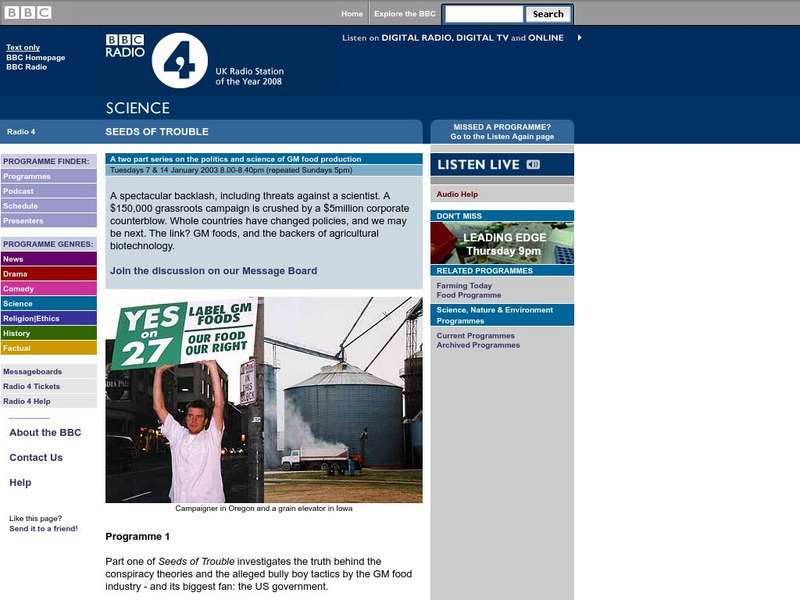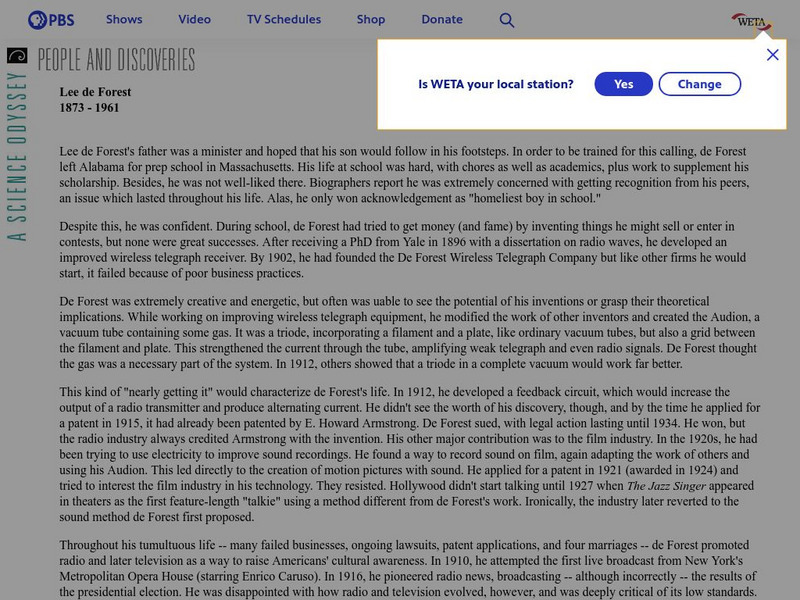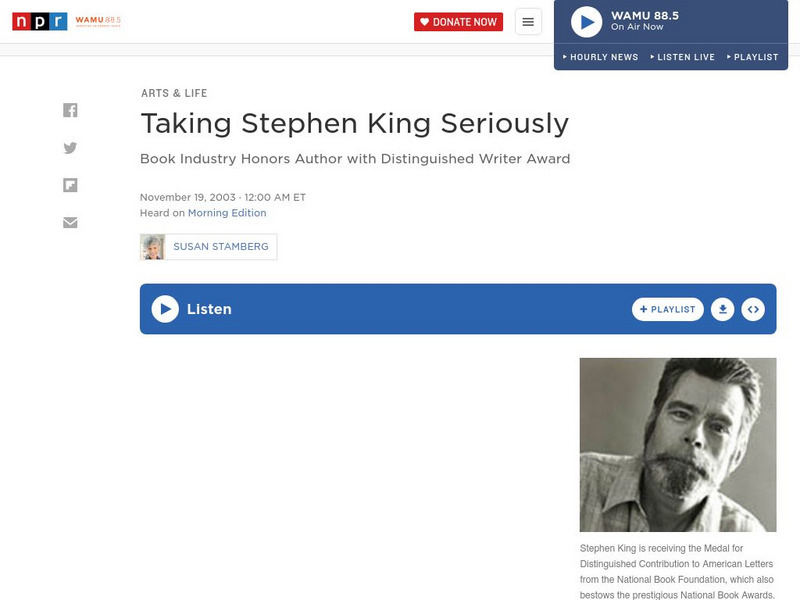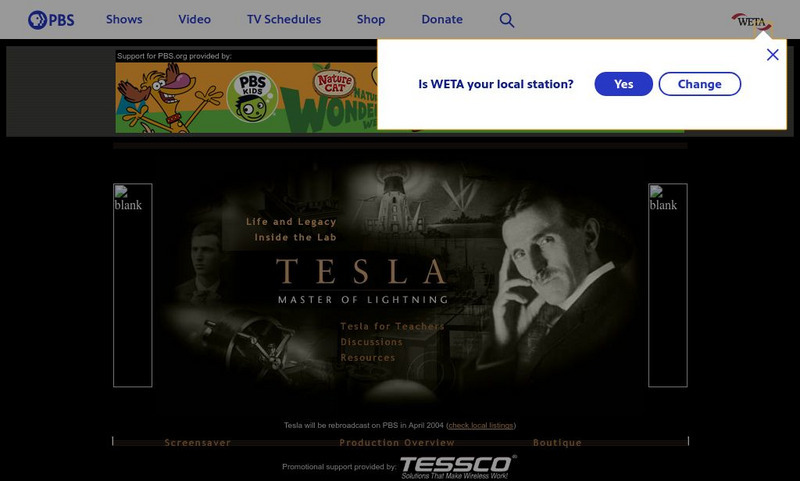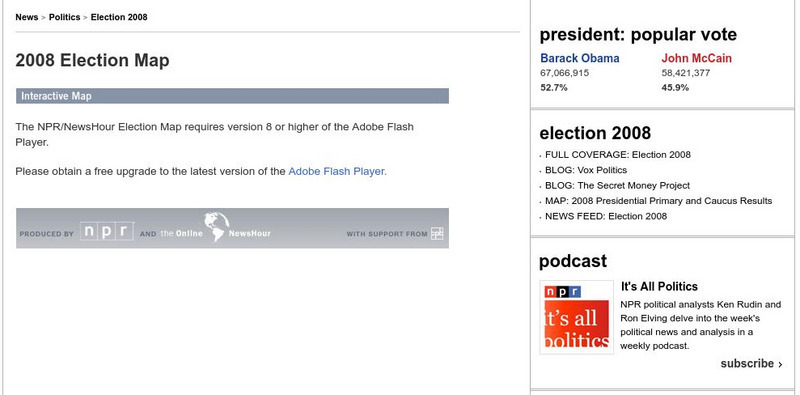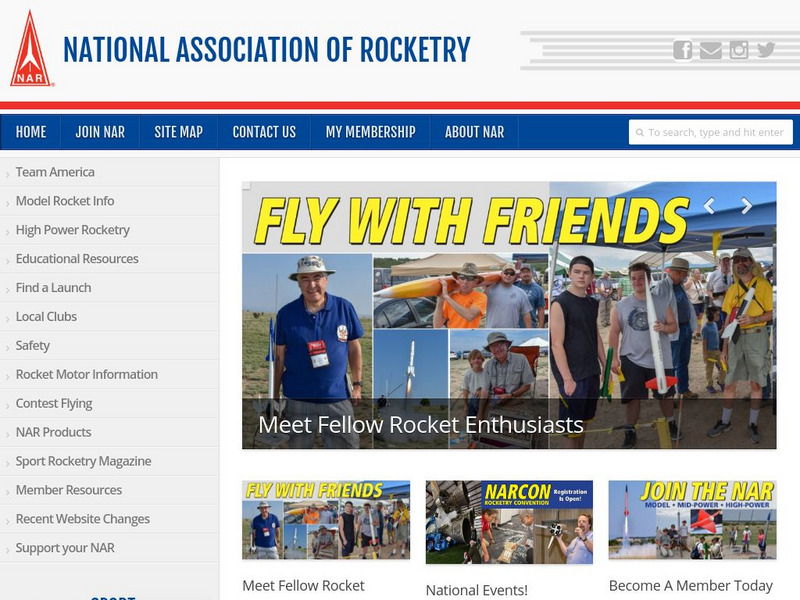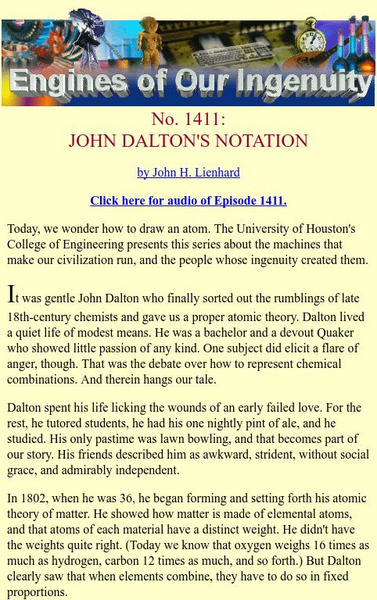Other
Radio Advertising Bureau
This is a site filled with information about radio advertising. Find out how to advertise, get some advertising ideas, check out advertising research, and more.
National High Magnetic Field Laboratory
Magnet Academy: Heinrich Hertz
The discovery of radio waves, which was widely seen as confirmation of James Clerk Maxwell's electromagnetic theory and paved the way for numerous advances in communication technology, was made by German physicist Heinrich Hertz. In the...
BBC
Bbc: Radio 4: Seeds of Trouble
Two summaries are provided of radio broadcasts concerning the ongoing political debate over genetically modified foods. Links to the actual radio broadcasts are also provided.
National High Magnetic Field Laboratory
Magnet Academy: Karl Jansky
Karl Jansky discovered extraterrestrial radio waves while investigating possible sources of interference in shortwave radio communications across the Atlantic for Bell Laboratories, and is often known as the father of radio astronomy....
California Institute of Technology
Submillimeter Wave Astrophysics at Caltech: Caltech's Submillimeter Observatory
Homepage of a radio telescope operated by Caltech in Hawaii. This radio telescope focusses on submillimeter frequencies. Be sure to look at the General Information link for info on telescope and the Astrophysics link to find information...
National High Magnetic Field Laboratory
Magnet Academy: John Daniel Kraus
For a man whose career involved the entire known universe, John Kraus had a remarkably insular upbringing. He was born and raised in Ann Arbor, Michigan, and earned his bachelor's, master's and doctoral degrees in physics, all at the...
PBS
People and Discoveries: Lee De Forest
A biography on audion inventor, Lee de Forest, from childhood on. Hyperlinks to additional information about the radio and broadcasting.
National High Magnetic Field Laboratory
Magnet Academy: Lee De Forest
American inventor Lee De Forest was a pioneer of radio and motion pictures. He received more than 300 patents over the course of his lifetime, the most important of which was for a three-electrode vacuum tube, or triode, that he called...
National High Magnetic Field Laboratory
Magnet Academy: Siegmund Loewe
Siegmund Loewe was a German engineer and businessman that developed vacuum tube forerunners of the modern integrated circuit. He pioneered both radio and television broadcasting, and the company he established with his brother, David...
NPR: National Public Radio
Npr: Taking Stephen King Seriously
Several related stories are featured here as heard on National Public Radio, mainly centered around King's National Book Award for Distinguished Contributions to American Letters.
PBS
Pbs Newshour Extra: Week of 2 17 14: Daft Punk Fans Are Likely Democrats
Article reports that Pandora radio will soon be allowing political candidates to advertise on the service, and the use of musical preferences to target political affiliation.
Other
Madison Media Institute
Are you interested in exploring a media career? The site has training opportunities in electronic media, including radio and TV broadcasting, and recording and multimedia technology programming.
Geographyiq
Geography Iq: Argentina Communications
This chart summarizes communication facts of Argentina including data on telephones, televisions, radios and internet usage.
Geographyiq
Geography Iq: Bangladesh Communications
This chart summarizes communication facts of Bangladesh including data on telephones, televisions, radios and internet usage.
PBS
This Is Home: The Hmong in Minnesota
This radio series gives an up-close-and-personal view of Hmong history, culture and the challenges of resettling in the U.S. Listen to, or read transcripts of, interviews with Hmong refugees, a clan leader trained by the CIA as part of...
Digital History
Digital History: The Space Race
In October 1957, the Soviet Union launched Sputnik 1, the world's first artificial satellite. The 184-pound, 22.5-inch sphere orbited the earth once every 96 minutes. Sputnik transmitted radio signals for 21 days and later burned up in...
National Endowment for the Arts
National Endowment for the Arts: The Big Read: Alvarez: Time of the Butterflies
Guide to Julia Alvarez's In the Time of the Butterflies provides historical context, author biography, questions, and a collection of resources for teachers, including a ten-day lesson schedule, project ideas, and essay topics. A radio...
Other
Radio Somaliland
Contains the latest news stories on the disputed area of "Somaliland," which has broken away from Somalia and is currently involved in a civil war. Please note that not all the stories are in English.
BBC
Bbc Radio 3 Classical: The Mass in B Minor by J. S. Bach
Information about one of Bach's most famous and most loved choral pieces, the mass in B minor. The article explains why the B minor mass is considered such an an enigmatic work. With a downloadable version of the text of the mass in...
PBS
Pbs: Tesla, Master of Lighting
Inventor Nikola Tesla is the subject of this extensive PBS site. In addition to information on Tesla's life and work, the site offers insight into the ways in which society and invention affect each other.
NPR: National Public Radio
Npr: 2008 Election Map of Primaries
Great interactive map that shows primary and caucus results for the 2008 Presidential election plus House, Senate, and Governor elections. Click on a state for up to date news stories.
Other
National Association of Rocketry
A site dedicated to model rocketry. Information on clubs, rockets, magazines, and other subjects of interest to model rocketry enthusiasts.
University of Houston
University of Houston: Engines of Our Ingenuity: No. 381: Civil War Submarine
A short discussion about the invention of the submarine and its use by both the Confederates and the Federals in the Civil War. This is a transcript of an accompanying radio broadcast.
University of Houston
University of Houston: Engines of Our Ingenuity: John Dalton's Notation
This is part of a small radio show at the University of Houston. It talks about how John Dalton came up with his version of chemical notation, and how it differs from our version of it today. It is available in audio form also.




